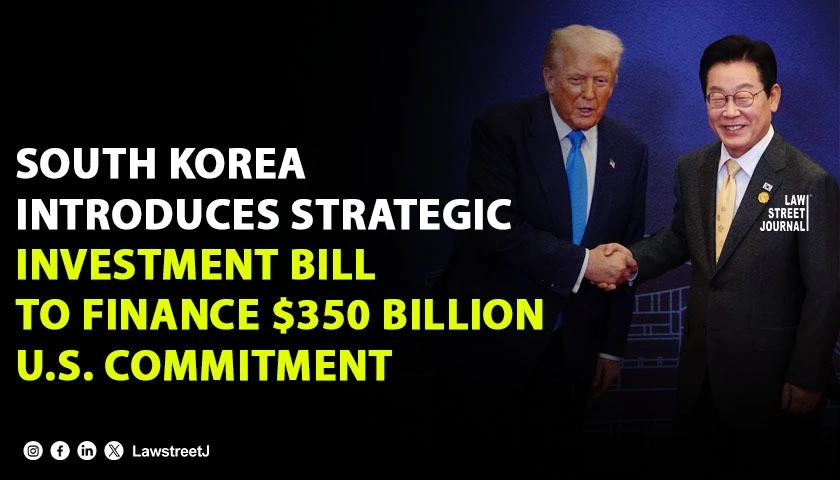South Korea: In a significant development that could reshape trade and investment ties with the United States, South Korea’s ruling Democratic Party has introduced a special legislative bill to create a fund supporting a previously announced $350 billion investment commitment in the U.S. market. The proposal, placed before the National Assembly on Tuesday, forms a central part of a bilateral agreement aimed at reducing U.S. tariffs on major South Korean exports, especially automobiles and shipbuilding products.
Legal Framework and Bilateral Agreement
The bill has been drafted in consultation with South Korea’s Ministry of Industry and the Ministry of Economy and Finance. It outlines the establishment of a temporary investment entity, tentatively titled the Korea–U.S. Strategic Investment Corp., which will operate for up to 20 years. Its mandate includes managing the dedicated fund and executing the phased investments agreed upon by both governments.
The legislative measure satisfies a key requirement under the tariff-reduction pact finalized earlier this month. According to the Finance Ministry, the bill enables the retroactive lowering of U.S. tariffs on South Korean automobiles and auto parts from 25% to 15%, effective November 1, 2025. South Korean officials confirmed that the U.S. Secretary of Commerce has been formally notified and that a request for publication of the tariff revision in the Federal Register has already been submitted.
The framework has been designed to comply with South Korean laws governing foreign exchange, sovereign investments, and public-fund management. Financing for the initiative will draw from income generated through the country’s foreign reserves and sovereign wealth assets. Oversight responsibilities will rest with the National Assembly and the Board of Audit and Inspection to ensure transparency in fund management and investment allocation.
The $350 billion commitment is divided into two major components. According to the Ministry of Economy and Finance:
- $250 billion will be directed toward strategic U.S. industries, including semiconductors, clean energy, and advanced manufacturing.
- $150 billion is earmarked for the modernization of the American shipbuilding sector, with investments in infrastructure development, workforce training, and technology-sharing mechanisms.
Finance Minister Koo Yun-cheol noted that the plan seeks to reinforce Korea’s competitive position in high-value sectors such as chips and maritime technologies while deepening industrial cooperation with the United States. The proposed fund is also structured to support joint ventures, extensive R&D collaboration, and regulatory alignment in emerging-technology sectors.
Legal provisions within the bill require full compliance with U.S. inves
ment-screening rules, including obligations under the Foreign Investment Risk Review Modernization Act (FIRRMA) and the Committee on Foreign Investment in the United States (CFIUS).
Economic Implications and Regulatory Oversight
The introduction of the bill marks a strategic shift in South Korea’s overseas investment posture, reflecting a closer alignment of its economic policies with broader geopolitical priorities. Analysts note that this approach comes at a time when global supply chains—particularly in semiconductors and maritime equipment—are undergoing structural realignments.
The fund’s operation will be subject to stringent oversight. Quarterly audits will be conducted, and each investment disbursement will require authorization from a joint oversight panel comprising senior officials from both governments. This mechanism was included to minimize risks linked to currency fluctuations and to ensure that fund deployment aligns with the terms of the bilateral agreement.
South Korea’s automotive industry, which accounted for $21.5 billion in bilateral trade with the U.S. in 2024, is expected to receive a significant boost once the tariff reductions take effect. Industry groups also anticipate long-term gains from the shipbuilding component, noting that the modernization of American shipyards will likely expand supply-chain links and increase demand for Korean maritime technologies and components.
Officials have pointed out that the timing of the initiative coincides with Korea’s efforts to expand its industrial footprint in North America, especially in battery manufacturing, electric vehicles, and advanced equipment. The investment package is also expected to support the establishment of new joint research centres, integrated supply networks, and harmonized technical standards in sectors identified as priorities by both countries.









